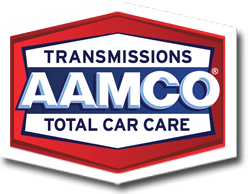Here at AAMCO Colorado, we hope to educate, as well as help others to have a better and more complete understanding of their vehicles. This week, we are going to be discussing suspensions. If you or a loved one has any issues relating to suspensions, or are in need of a Colorado auto mechanic in general then please contact or visit one of our many Colorado AAMCO locations.
Suspension Systems
A vehicle’s suspension system is comprised of springs, shock absorbers and links that connect a vehicle to the actual wheels. Suspensions systems serve two purposes: one is that they enhance the safety of the vehicle by making it more responsive to turning and breaking, and it jostles the vehicle and its occupants less in transit. Generally, you would want a tighter suspension to increase the vehicle’s responsiveness and safety, but that would make the transit less comfortable as every bump and crack would be felt. So a fine line must be ridden in order to allow a suspension to serve both purposes effectively.
Stagecoach Suspensions
In the late 18th and early 19th century, most of all British horse carriages were equipped with some form of spring suspension. This could either be wooden as in the case of lightweight, single horse-drawn coaches. Or it could be made of steel for larger, multi horse-drawn coaches. The heavier these coaches became the more leaf layers that were needed in the spring suspension.
However, the suspensions made in Britain at the time were not suited for the difficult American terrain and roads. So a new form of suspension was developed at the Abbot Downing Company of Concord, New Hampshire. Rather than the sturdy metal springs coaches in Britain used, Abbot found that leather straps called, thoroughbraces could be used to keep the passengers from bouncing up and down which the spring suspension caused on uneven roads. These leather straps allowed the coach to swing rather than bounce, they also kept them from overturning when cornered too fast.
Automobile Suspensions
The first automobiles were designed and developed as horse-drawn vehicles, save for it being self-propelled rather than actually being horse-drawn. This brought about certain problems as the combustion engine allowed for much higher speeds to be reached than was previously available. Thus, the tires, brakes, suspensions and numerous other components had to be redone in order to be used in the first automobiles.
Passive Springs and Shock Absorbers
Traditional springs and shock absorbers are called passive suspensions, which are used on most vehicles found on the road today. The springs reduce the feeling of impact on uneven roads while the shock absorbers control the springs themselves, ensuring that you aren’t flung around.
There are many types of “springs” being used in vehicles nowadays, but here is a list of a few of them.
- Coil Spring: These are special types of torsion springs which act in torsion when the spring is compressed or extended.
- Air Spring: Air suspension is powered by an electric or engine-driven compressor or air pump.
- Rubber Bushing: This is a type of vibration isolator, which provides insolation between two parts.
- Torsion Beam Suspension: This type of suspension is where both wheels are not independent and are attached to one another.
- Leaf Spring: The leaf spring dates back to medieval times, making it one of the oldest forms of suspension.
The shock absorbers on a vehicle have but a single task to accomplish, which is the dampening of the up and down motion that a vehicle creates from its springs when in motion. They are also necessary for the same reason while turning or braking. If the vehicle was to bounce up and down, traction would be lessened and the trip itself would become unpleasant.
In all, suspension systems are very easy to understand, where they become difficult is when you begin to discuss the less common forms as they are numerous and can become complicated. As in military vehicles for example. So we will not dive into those, as very few people will find it useful. But if you feel your vehicle is in need of a check-up, an experienced Colorado car mechanic can be found at any of our AAMCO locations found throughout the state.
